Second Innovation: Creating Value from Science, Technology and Digital Transformation
At the Forum “Future of Science and Technology, Innovation and National Digital Transformation” held on August 29 at the National Exhibition Center (Dong Anh, Hanoi), Minister of Science and Technology Nguyen Manh Hung emphasized the accompanying role of science and technology over the past 80 years, from war to national construction.
He affirmed that the Party and State have identified science and technology, innovation and digital transformation as the central, key and breakthrough driving force for rapid and sustainable development.
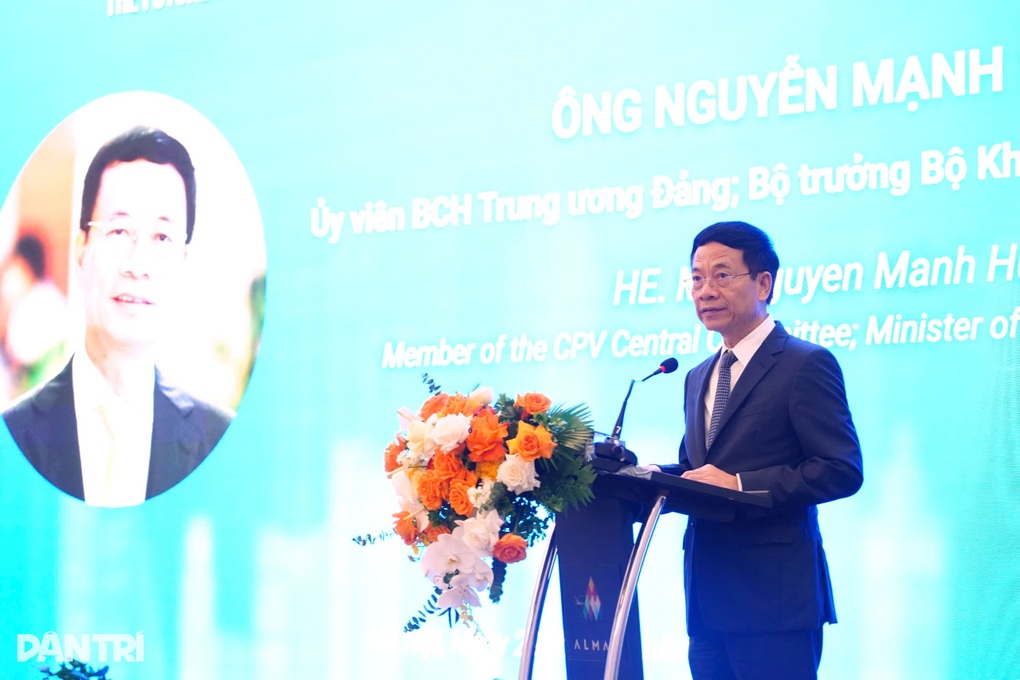
Minister of Science and Technology Nguyen Manh Hung delivered the opening speech at the Forum (Photo: Organizing Committee).
Our first innovation was the 1986 Innovation, opening the era of integration and development of a socialist-oriented market economy .
The second innovation is innovation and digital transformation, building a new ecosystem where businesses, scientists, people and the State participate in creating value.
“The first innovation was to escape poverty, the second innovation was to escape the middle-income trap and become a developed country with high income. The first innovation took agriculture, industry, processing and assembly as the driving force, the second innovation took science and technology, innovation and digital transformation as the central driving force for development,” Minister Hung emphasized.
Vietnam Aspiration 2045: From Middle Income to High Income
In the context of traditional economic growth reaching its limit, Vietnam is facing an urgent need to transform its development model, taking science and technology, innovation and digital transformation as the main driving force.
This is the comment made by Deputy Minister of Science and Technology Hoang Minh.
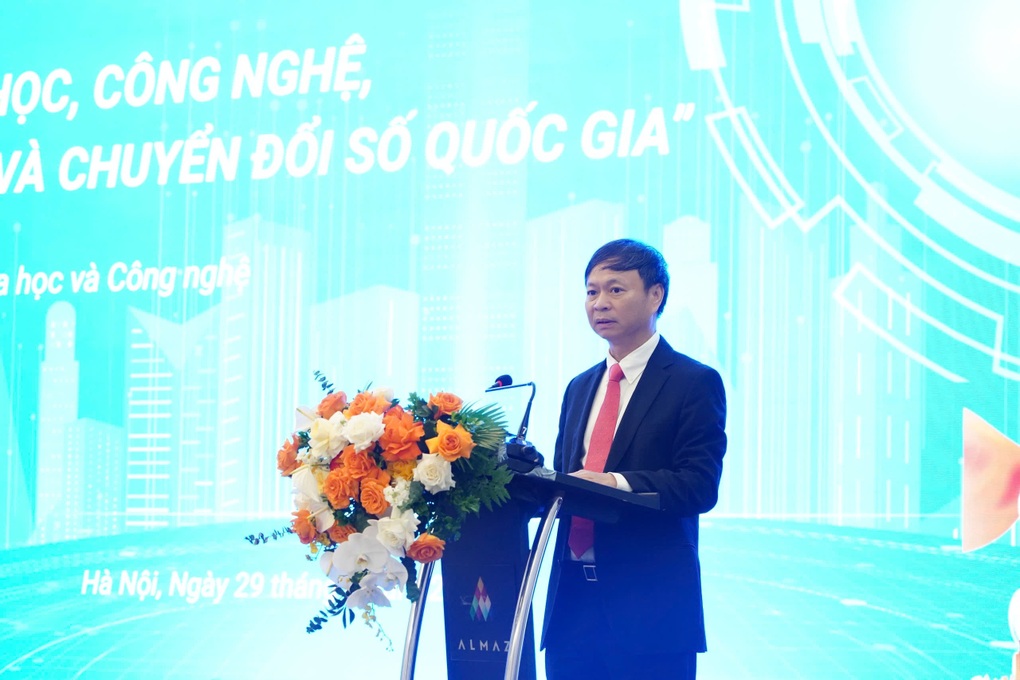
Deputy Minister of Science and Technology Hoang Minh reported at the forum (Photo: Organizing Committee).
According to Deputy Minister Hoang Minh, this new growth model not only helps improve productivity and quality but also builds modern national governance, enhances independence, self-reliance and reduces dependence on global shocks.
For latecomers like Vietnam, “technology leapfrogging” through the acquisition, improvement and creative application of existing technology is a key strategy. Innovation, with its ability to create value under limited conditions, is particularly suitable for the context of developing countries.
The Forum emphasized two strategic goals based on the spirit of Resolution 57: rapid (double-digit) and sustainable GDP growth, along with enhancing national competitiveness.
This is the roadmap for Vietnam to realize its aspiration of becoming an upper-middle-income developed country by 2030 and a high-income country by 2045.
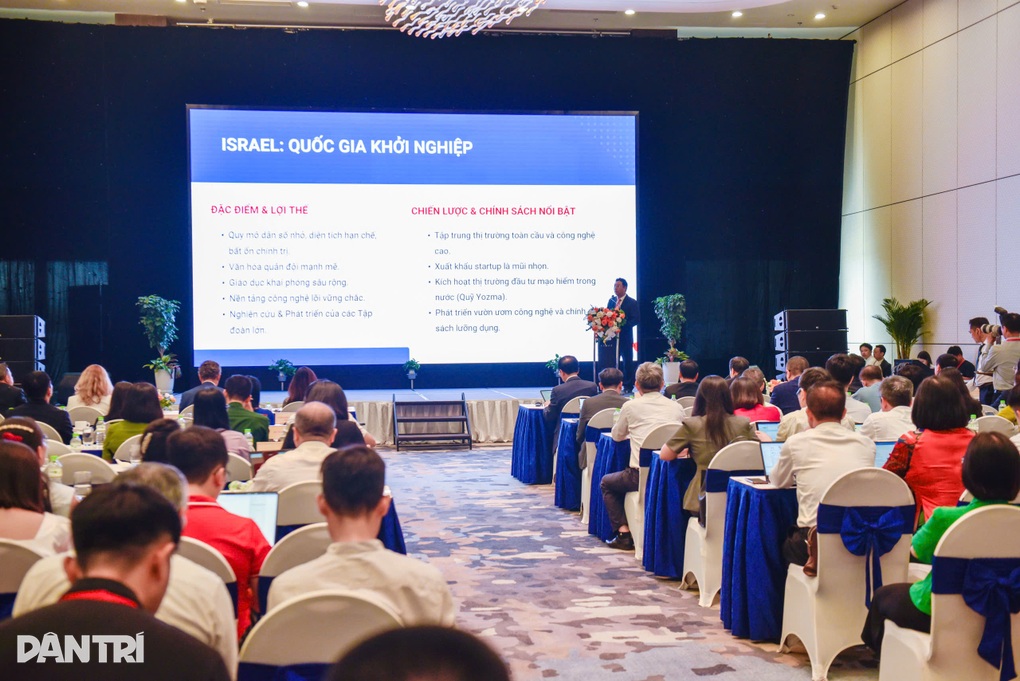
Many issues on science and technology, digital transformation and innovation were raised at the Forum (Photo: Minh Nhat).
“International studies have shown that innovation is the key for developing countries to escape the middle-income trap. Innovation is a strategic gateway for developing countries to shorten the gap with developed countries, optimize limited resources, and create practical value from what is available for rapid development,” said Deputy Minister Minh.
Resolution 57 also clearly states that science and technology, innovation and digital transformation will be decisive factors, contributing to raising the total factor productivity (TFP) to over 55% in growth contribution, instead of depending on cheap labor and resource-intensive as before.
Multi-level innovation ecosystem and the role of the market
Sharing on the sidelines of the forum, Prof. Dr. Le Anh Tuan - Chairman of the Council of Hanoi University of Science and Technology, emphasized the need for a multi-level innovation ecosystem, from national to grassroots, with interactions through venture capital funds and product development funds.
He likened this to a "people's war" on startups and innovation, where every citizen has creative ideas.
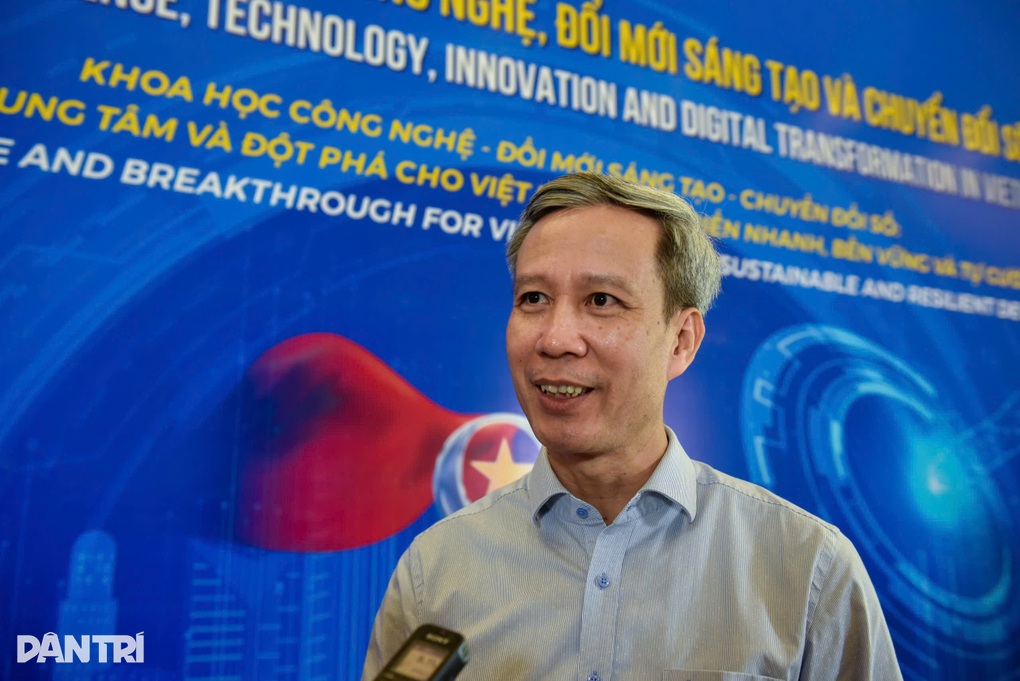
Prof. Dr. Le Anh Tuan - Chairman of the Council of Hanoi University of Science and Technology (Photo: Minh Nhat).
Professor Tuan also proposed that the State should invest in excellent research centers, laboratories and testing centers operating under an open mechanism.
In particular, he emphasized the role of businesses: “Businesses need to participate from the beginning to provide financial support as well as ideas in product creation.
This is also an opportunity to make the product marketable right from the start of the idea. If you can do that, the product will have meaning.”
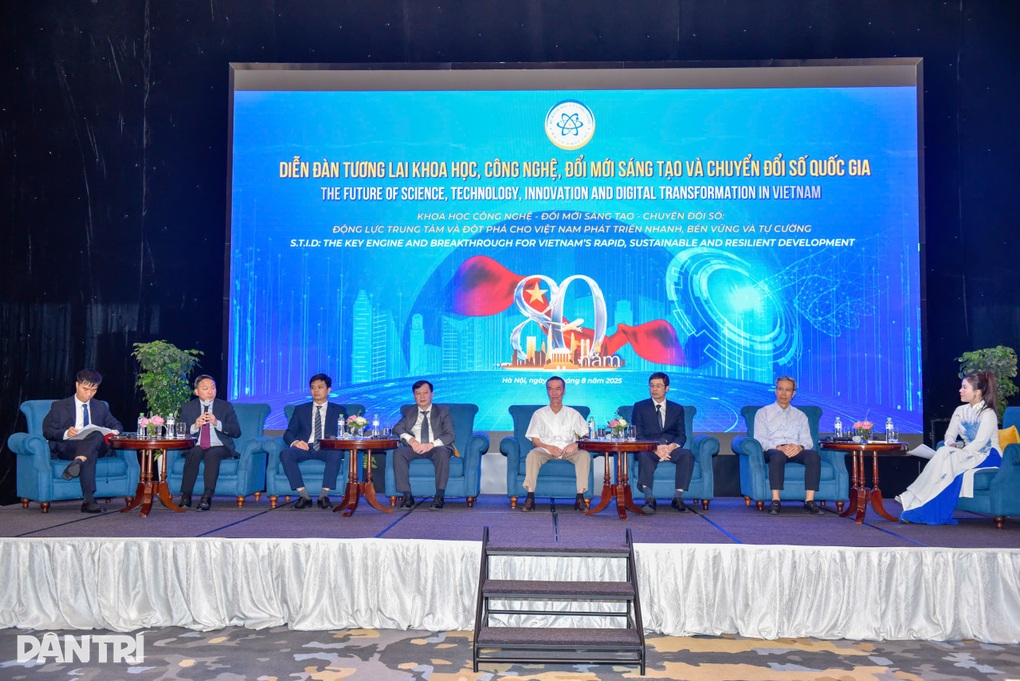
The forum was organized with four in-depth working sessions (Photo: Minh Nhat).
The forum focused on discussing key issues such as: grasping and developing strategic technologies, building an internationally integrated innovation ecosystem, developing digital infrastructure and ensuring national digital sovereignty, along with solutions for Vietnamese enterprises to participate more deeply in the global value chain.
The forum was organized with four in-depth working sessions, attracting the attention of many scientists, experts and businesses.
Source: https://dantri.com.vn/khoa-hoc/chien-luoc-cu-nhay-coc-cong-nghe-vuot-bay-thu-nhap-trung-binh-20250829114602464.htm




![[Photo] President Luong Cuong receives Speaker of the New Zealand Parliament Gerry Brownlee](https://vphoto.vietnam.vn/thumb/1200x675/vietnam/resource/IMAGE/2025/8/29/7accfe1f5d85485da58b0a61d35dc10f)





























































































Comment (0)